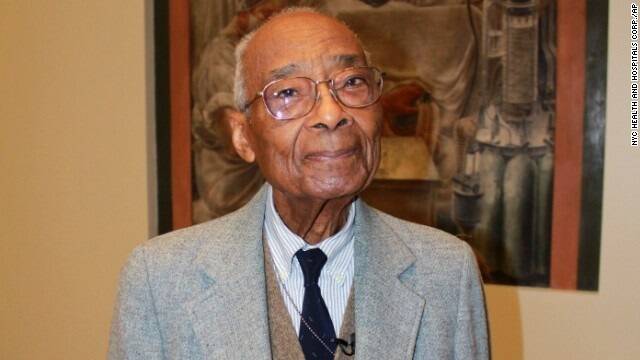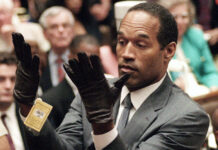
Beaufort County native Dr. John Cordice operated on Martin Luther King, Jr. in a Harlem, N.Y., hospital On Sept. 20, 1958,
THIS WEEK IN HISTORY
ROBESON COUNTY HISTORY
Local schools open with largest number in history: The Sept. 17, 1923 Ropbesonian carried the following on its front page: Crowd filled Auditorium this morning — Most enthusiastic Opening — Dupt. Crumpton Urges Organization of Parent-Teachers Association. Lumberton’s graded and high schools opened at 10 a.m. today with an estimated increased of 150 pupils. It was the largest and most enthusiastic opening in the history of the town. Many patrons were present at the opening exercises and the high school auditorium was packed to its capacity, both lower floor and gallery, a number of smaller children sitting on the rostrum.
Filing Opens for Nov. 6: On Sept. 16, 1973, the following story appeared in tThe Robesonian: Friday was opening day for filing for city council positions in the November 6 Lumberton municipal elections. Four positions are open this year, with the two-year-terms of councilmen Hubert Gore (Precinct 5), W. W. Davis, mayor pro-tem (precinct 81, Frank Benton (precinct 3) and Dr. Douglas Melnlyre (precinct 21 open. Councilman W. W. Davis has moved from the eighth precinct into precinct number one and will be unable to run for his incumbent seat but James L. ‘Monk’ Bracey has filed for the as yet uncontested council seat.
Florence threatens Robeson County: On Sept. 14, 2018, The Robesonian carried the following story: Robeson County residents, hunkered down and awaiting the arrival of Hurricane Florence, awakened Thursday to what appeared to be good news, that the hurricane some feared would hit North Carolina as a Category 4 or 5 storm had weakened to a Cat 2.
NORTH CAROLINA HISTORY
Hurricane Floyd Devastating to Eastern North Carolina: Damage from Hurricane Floyd in Edgecombe County. Image from the State Archives.On September 16, 1999, Hurricane Floyd made landfall at Cape Fear as a very strong category 2 storm. At its peak in the Atlantic, Floyd was among the largest category 4 storms on record. Even as it came ashore it was almost twice the size of a normal hurricane. The 12 to 20 inches of rain that fell as a result of Floyd, which arrived only ten days after another hurricane, caused every river in eastern North Carolina to flood.
Among the towns most devastated by Floyd were Rocky Mount, Tarboro, Kinston and Princeville. The fate of the little town of Princeville, founded by freed slaves, tugged especially hard at the heartstrings of many North Carolinians—most of whom had never been there—as the whole town was underwater for days. A Federal Emergency Management Agency (FEMA) official stated that, although he had worked through more than 100 disasters since 1992, he had never seen flooding as bad as in Princeville.
FEMA declared 66 North Carolina counties as disaster areas after Floyd.
Martin Luther King’s 1958 Surgery Led by North Carolinian: On September 20, 1958, Beaufort County native Dr. John Cordice operated on Martin Luther King, Jr. in a Harlem, N.Y., hospital. He is now widely credited with saving Dr. King’s life.
Born in the small community of Aurora, east of Greenville, Cordice was raised in Durham. After college and medical school at New York University and a work as a doctor alongside the Tuskegee Airmen during World War II, Cordice became a heart surgeon at Harlem Hospital.
On the day in question, King was stabbed by a woman outside a New York department store while autographing copies of a book he was promoting. He was brought to Harlem Hospital, where then New York Gov. W. Averell Harriman requested that African American doctors work on him. Cordice, who wasn’t even on duty that day, happened to stop by Brooklyn medical office where he received a call to come at once and operate an important person who had been injured.
After rushing to the hospital, Cordice and other surgeons used a hammer and chisel to crack King’s sternum and remove the blade with which he had been stabbed, thereby saving King’s life.
At the time, credit for feat was given to Dr. Aubré de Lambert Maynard, the hospital’s chief of surgery, but historians have since concluded that it was Cordice and Dr. Emil Naclerio, an Italian-American , who truly ensured King’s survival.
NATION AND WORLD HISTORY
Hunt them down: On Sept. 16, 2001, President George W. Bush, speaking on the South Lawn of the White House, said there was “no question” Osama bin Laden and his followers were the prime suspects in the Sept. 11 attacks; Bush pledged the government would “find them, get them running and hunt them down.”
Unabomber manifesto: On Sept. 19, 1995, The New York Times and The Washington Post published the manifesto of Unabomber Ted Kaczynski (kah-ZIHN’-skee), which proved instrumental in identifying and capturing him.
Preliminary Emancipaion Proclamation: On Sept. 22, 1862, President Abraham Lincoln issued the preliminary Emancipation Proclamation, declaring all slaves in rebel states should be free as of January 1, 1863 if the states did not end the fighting and rejoin the union.






